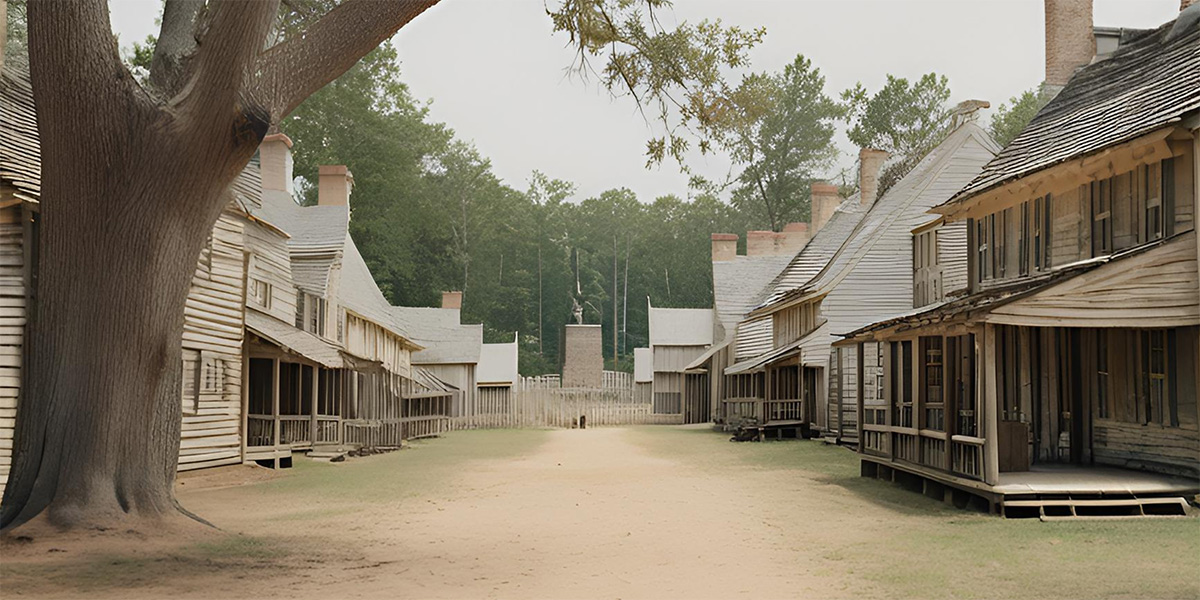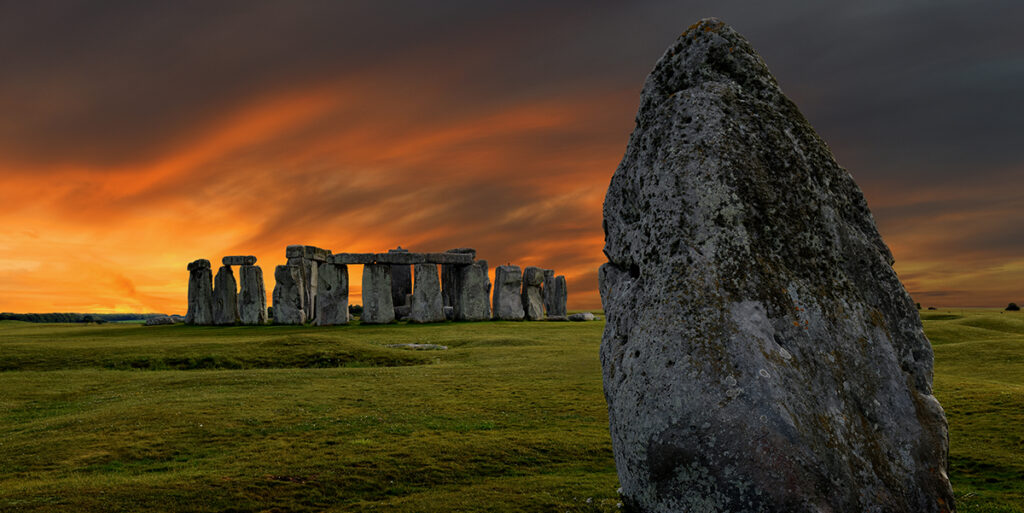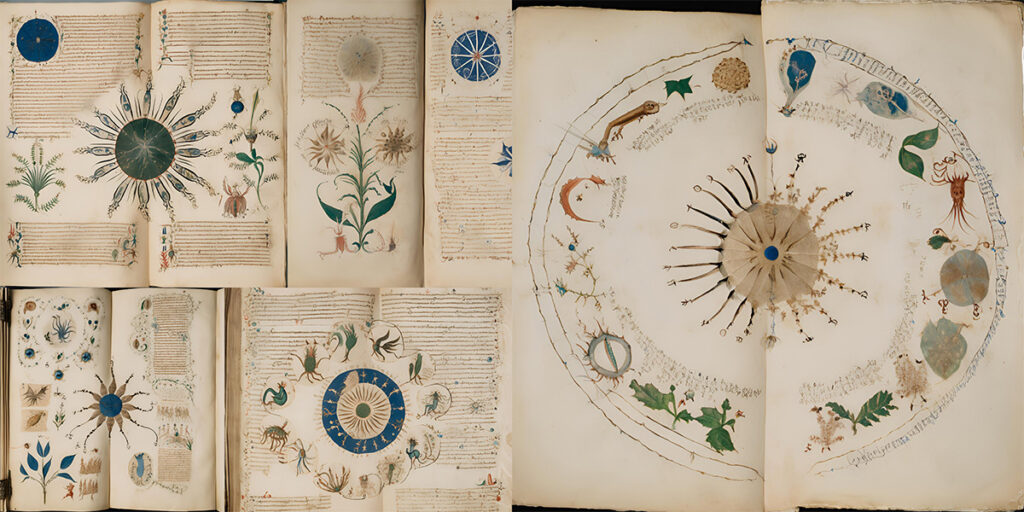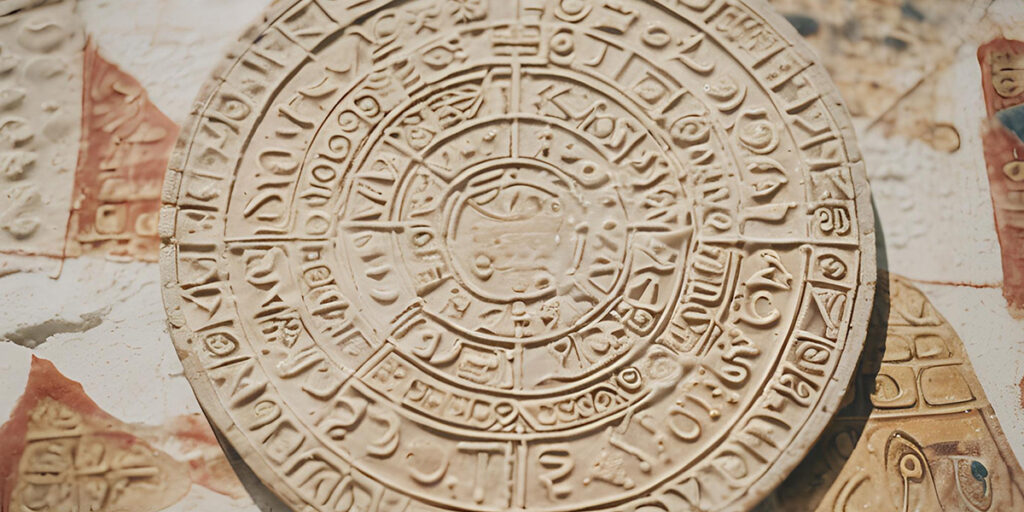History is replete with enigmatic events and puzzling phenomena that continue to baffle scholars, historians, and enthusiasts alike. Despite the incredible technological advancements, archaeology, and historical research, some mysteries seem destined to remain forever cloaked in shadow. These unresolved puzzles span centuries and continents, captivating our imaginations and challenging our understanding of the past.
One of the most fascinating aspects of history is the myriad of unanswered questions that persist despite our best efforts to resolve them. These mysteries, often entwined with the legends and lore of their time, offer glimpses into the complexities of human civilization and the often-unpredictable nature of historical events. They range from inexplicable disappearances and cryptic artifacts to elusive identities and unanswered cultural phenomena, each adding a layer of intrigue and wonder to our historical tapestry.
Consider the Roanoke Colony, where an entire settlement vanished without a trace, leaving only a single word carved into a tree as a clue. Or the Ark of the Covenant, an artefact of immense religious significance, which disappeared from historical records and has inspired countless theories about its current whereabouts. Such mysteries not only pique our curiosity but also highlight the limitations of our understanding and the gaps in our historical knowledge.
Advancements in technology have undeniably revolutionized our ability to investigate the past. Modern tools such as satellite imagery, DNA analysis, and ground-penetrating radar have provided new insights into age-old questions. Yet, for some mysteries, even the most sophisticated technologies have failed to yield definitive answers. The enigmatic Voynich Manuscript, with its undeciphered script and bizarre illustrations, remains as mysterious today as when it was discovered. Similarly, the true identity of the serial killer Jack the Ripper continues to elude investigators, despite over a century of scrutiny and speculation.
These historical conundrums serve as a reminder of the inherent uncertainty and the often elusive nature of truth. They challenge us to consider the possibility that some aspects of our past may never be fully understood or explained. This uncertainty can be both frustrating and exhilarating, driving ongoing research and fostering a sense of wonder and curiosity.
As we delve into these historical mysteries, we uncover stories that are not only intriguing but also reflective of the complexity and depth of human history. Each mystery holds its own unique allure, provoking debate and speculation and inspiring countless theories and investigations. Here are ten of the most perplexing historical mysteries that will probably never fully unravel, reminding us that some secrets of the past may always elude our grasp. These enduring enigmas continue to captivate our imaginations and challenge our understanding of history, ensuring that the quest for knowledge and discovery remains an ever-evolving journey.
1. The Disappearance of the Roanoke Colony

The disappearance of the Roanoke Colony remains one of the most perplexing mysteries in American history. Established in 1587 on Roanoke Island in present-day North Carolina, the colony was meant to be the first permanent English settlement in the New World. When the colony’s leader, John White, returned from a supply trip to England in 1590, he found it completely deserted. The only clue left behind was the word “CROATOAN” carved into a post, suggesting a possible move to Croatoan Island (now Hatteras Island).
Several theories have been proposed to explain the colonists’ fate, including assimilation with local Native American tribes, succumbing to starvation or disease, or falling victim to Spanish forces from Florida. Despite archaeological efforts and historical research, no conclusive evidence has surfaced to explain what happened to the Lost Colony. This enduring mystery continues to intrigue historians and inspire imaginative speculation about the early days of European settlement in America.
2. The Fate of the Ark of the Covenant

The Ark of the Covenant is one of the most iconic and enigmatic artefacts in religious history. According to biblical descriptions, the Ark is a gold-covered wooden chest that housed the stone tablets of the Ten Commandments, along with Aaron’s rod and a pot of manna. Revered as a sacred relic, the Ark played a central role in ancient Israelite worship and was believed to possess immense spiritual power.

The Ark’s last confirmed location was in the First Temple in Jerusalem, which was built by King Solomon. In 587 BC, the Babylonians, led by King Nebuchadnezzar, conquered Jerusalem and destroyed the First Temple. This catastrophic event marks the Ark’s disappearance from historical records. Whether it was hidden, destroyed, or taken by the Babylonians remains unknown.
Numerous theories and legends have emerged regarding the Ark’s fate. One prominent theory suggests that the Ark was hidden by priests to protect it from the invading Babylonians. Some believe it was secreted away in a hidden chamber beneath the Temple Mount. However, excavations in this sensitive and politically charged area have not yielded any evidence.
Another popular legend claims the Ark was transported to Ethiopia. According to Ethiopian Orthodox tradition, the Ark rests in the Church of Our Lady Mary of Zion in Axum, guarded by a single monk who is forbidden to leave the church grounds. Despite these claims, no verifiable proof has been provided to confirm the Ark’s presence there.
Other theories propose that the Ark was taken to Egypt, hidden in caves near the Dead Sea, or even transported to Europe during the Crusades. Each hypothesis adds a layer of intrigue to the Ark’s story but lacks conclusive evidence.
The fate of the Ark of the Covenant continues to captivate archaeologists, theologians, and adventurers. Its mysterious disappearance and the sacred significance it holds for Judaism, Christianity, and Islam ensure that the quest for the Ark remains one of history’s most enduring and tantalizing mysteries. Whether it still exists or lies lost to time, the Ark of the Covenant remains a symbol of divine connection and historical wonder.
3. The Identity of Jack the Ripper

Jack the Ripper is one of history’s most notorious and mysterious serial killers, having terrorized the Whitechapel district of London in 1888. The killer brutally murdered at least five women, all of whom were involved in prostitution and mutilated their bodies in a gruesome manner. The brutality and surgical precision of the murders led to widespread speculation about the killer’s background, with theories ranging from a skilled doctor to an insane butcher.
Over the years, numerous suspects have been proposed, ranging from ordinary

citizens to prominent figures. Some theories implicate members of the British royal family, such as Prince Albert Victor, suggesting a cover-up to protect the monarchy. Others have pointed to artists like Walter Sickert, whose morbid paintings some believe reflect intimate knowledge of the crimes. There are also theories involving doctors, such as Sir William Gull, Queen Victoria’s physician, due to the surgical nature of the killings.
Despite advances in forensic science, including DNA analysis and psychological profiling, the true identity of Jack the Ripper remains unknown. The lack of definitive evidence and the passage of time have only deepened the mystery. The case has inspired countless books, films, and academic studies, keeping the legend of Jack the Ripper alive and maintaining its status as one of the most chilling and unsolved chapters in criminal history. The enduring fascination with Jack the Ripper reflects our ongoing quest to understand and solve one of the darkest enigmas of the Victorian era.
4. The Disappearance of Amelia Earhart

The disappearance of Amelia Earhart is one of the most enduring mysteries of the 20th century. Amelia Earhart, a pioneering aviator and the first woman to fly solo across the Atlantic Ocean, set out on an ambitious journey to circumnavigate the globe in 1937. Accompanied by her navigator, Fred Noonan, Earhart’s journey was meticulously planned, aiming to cover approximately 29,000 miles with numerous stops for refuelling and rest.
Their journey commenced on June 1, 1937, from Miami, Florida. They successfully flew through South America, Africa, the Indian subcontinent, and Southeast Asia, covering nearly 22,000 miles. On July 2, 1937, Earhart and Noonan departed from Lae, New Guinea, heading towards Howland Island, a tiny speck of land in the central Pacific Ocean. This leg of the journey was particularly challenging due to the island’s small size and the vast expanse of ocean they needed to cross.

During this flight, Earhart and Noonan faced numerous difficulties, including poor visibility, unreliable maps, and potential issues with their aircraft’s radio communications. Despite their best efforts, they were unable to establish consistent contact with the U.S. Coast Guard cutter Itasca, stationed near Howland Island to assist them. The last confirmed radio transmission from Earhart indicated that they were running low on fuel and could not locate Howland Island. Shortly thereafter, all communication was lost, and their Lockheed Electra aircraft vanished without a trace.
The disappearance triggered an extensive search effort, involving the U.S. Navy and Coast Guard, covering 250,000 square miles of ocean. Despite these efforts, no definitive evidence of the aircraft or its occupants was found. Over the years, numerous theories have emerged to explain their fate:
Crash and Sink Theory:
The most widely accepted theory suggests that Earhart’s plane ran out of fuel and crashed into the Pacific Ocean. Despite extensive underwater searches, including those using advanced technology, no wreckage has been conclusively identified.
Gardner Island (Nikumaroro) Hypothesis:
Another prevalent theory posits that Earhart and Noonan may have landed on the uninhabited Gardner Island (now Nikumaroro), part of Kiribati. This theory gained traction when artefacts, including a piece of aircraft aluminium and skeletal remains, were found on the island. However, none of these findings have been definitively linked to Earhart.
Japanese Capture Theory:
Some speculate that Earhart and Noonan may have been captured by Japanese forces, suspecting them of espionage. This theory suggests they were taken to the island of Saipan, where they possibly perished in captivity. However, there is no concrete evidence to support this claim.
New Britain Theory:
A less popular theory suggests they may have landed in the remote jungles of New Britain Island, Papua New Guinea. This is based on anecdotal evidence from local inhabitants but lacks substantial proof.
Despite modern advancements in technology and ongoing searches, Amelia Earhart’s disappearance remains a tantalizing mystery. Her legacy as a trailblazer in aviation endures, inspiring generations of adventurers and aviators. The enigma surrounding her final flight continues to captivate the public imagination, symbolizing the allure of exploration and the enduring quest for answers in the face of the unknown.
5. The Construction of Stonehenge

Stonehenge, the prehistoric monument in England, has fascinated historians and archaeologists for centuries. Built between 3000 BC and 2000 BC, its purpose and construction methods remain subjects of debate. Theories range from it being an astronomical observatory, a religious site, or a burial ground. The precise techniques used to transport and erect the massive stones, some from over 200 miles away, are still not fully understood.
6. The Mystery of the Voynich Manuscript

The Voynich Manuscript, a mysterious and undeciphered book dating back to the 15th century, has puzzled cryptographers, linguists, and historians. Filled with strange illustrations of plants, astronomical charts, and human figures, the manuscript is written in an unknown script. Despite numerous attempts to decode it, including using modern computer algorithms, the Voynich Manuscript’s language and purpose remain unknown, making it one of history’s greatest literary enigmas.
7. The Disappearance of the Mary Celeste

The Mary Celeste is one of the most enduring maritime mysteries in history. On December 5, 1872, the American merchant ship was found adrift in the Atlantic Ocean by the British brig Dei Gratia. What baffled the crew of the Dei Gratia was that the Mary Celeste was in near-perfect condition; the ship was seaworthy, and her cargo of denatured alcohol was largely untouched. The personal belongings of the crew were still in place, and there were ample provisions on board. However, the lifeboat was missing, and the ship’s crew was nowhere to be found.
Captain Benjamin Briggs, his wife, their two-year-old daughter, and seven experienced crew members had vanished without a trace. Over the years, numerous theories have been proposed to explain their disappearance. Some suggest a sudden and violent storm might have led the crew to abandon ship in a panic. Others speculate that an alcohol explosion, though unlikely to leave the ship undamaged, could have caused the crew to fear for their lives and flee in the lifeboat.
More imaginative theories include piracy, although there was no sign of struggle or theft, and mutiny, though the evidence does not support this. Supernatural explanations, such as sea monsters or alien abductions, have also been suggested but lack credibility.
Despite extensive investigations and research, no definitive explanation has been found. The fate of Mary Celeste’s crew remains one of the most perplexing maritime mysteries, captivating the imagination of historians, writers, and mystery enthusiasts for over a century. This unsolved enigma continues to inspire books, films, and speculation, cementing its place in the annals of maritime lore.
8. The Location of Cleopatra’s Tomb

Cleopatra VII, the last active ruler of the Ptolemaic Kingdom of Egypt, is one of history’s most enigmatic and fascinating figures. Following her suicide in 30 BC, she was reportedly interred alongside her lover, Mark Antony. Ancient sources, such as Plutarch and Suetonius, suggest that their tomb was a grand and majestic structure befitting their status and dramatic love story. However, the precise location of this tomb remains one of archaeology’s most tantalizing mysteries.
Despite numerous attempts to locate the burial site, including extensive archaeological digs in Alexandria and surrounding areas, the tomb has never been found. Some theories propose that the tomb lies beneath modern-day Alexandria, submerged underwater due to earthquakes and rising sea levels over the centuries. Others speculate that the tomb could be hidden in the vast deserts of Egypt, away from the hustle and bustle of ancient cities.
The discovery of Cleopatra’s tomb would be a monumental archaeological find, providing invaluable insights into her reign, her cultural and political impact, and the nature of her relationship with Mark Antony. It could also shed light on burial practices of the era and potentially unveil artifacts that have remained hidden for over two millennia. Until such a discovery is made, the location of Cleopatra’s final resting place continues to spark curiosity and intrigue, symbolizing the enduring mystery of Egypt’s rich and storied past.
9. The Identity of the Man in the Iron Mask

The Man in the Iron Mask is one of France’s most enduring historical enigmas. This mysterious prisoner was held in various French jails, including the notorious Bastille, during the reign of King Louis XIV. The intrigue surrounding him is heightened by the fact that his face was hidden behind a mask. While some accounts suggest it was made of black velvet, later popularized versions claim it was made of iron.
The mystery of the prisoner’s identity has fueled speculation for centuries. Voltaire, the famed philosopher, suggested that the prisoner was an older, illegitimate brother of Louis XIV, while Alexandre Dumas’s romanticized novel proposed he was the king’s twin. Other theories include that he was a disgraced nobleman, a political rival, or a military officer who fell out of favor. Historical records from the period offer little clarity, often shrouded in secrecy and contradiction.
Despite extensive research and historical analysis, no definitive evidence has surfaced to conclusively identify the Man in the Iron Mask. His enigmatic existence continues to captivate historians and the public alike, symbolizing the intrigue and drama of royal courts and the complexities of absolute power. This unresolved mystery remains a fascinating chapter in French history, reflecting the period’s penchant for intrigue, secrecy, and the control exerted by the monarchy.
10. The True Purpose of the Phaistos Disc

The Phaistos Disc, discovered in the Minoan palace of Phaistos on Crete in 1908, is a unique archaeological find. The clay disc, dating back to the second millennium BC, is covered with mysterious symbols arranged in a spiral pattern. Despite extensive study, the disc’s purpose and the meaning of its symbols remain unknown. Some suggest it is a form of ancient writing or a religious artefact, but without more evidence, its true nature remains speculative.
Conclusion
These ten historical mysteries captivate our imaginations and challenge our understanding of the past. They remind us that, despite our advances in knowledge and technology, there are still aspects of history that elude us. The disappearance of the Roanoke Colony, the fate of the Ark of the Covenant, and the identity of Jack the Ripper are just a few examples of the enigmatic puzzles that continue to intrigue and perplex us. Perhaps one day new evidence will emerge to solve these mysteries, but until then, they remain tantalizing questions that inspire curiosity and wonder about our history.
The allure of historical mysteries lies not only in the unknown but in the stories they weave and the endless possibilities they suggest. The Roanoke Colony’s sudden disappearance, with its eerie “CROATOAN” carving, opens a window into the perilous and often desperate lives of early settlers, prompting us to imagine their fate and the challenges they faced. Similarly, the Ark of the Covenant, a relic of immense religious significance, embodies the intersection of faith, history, and legend. Its mysterious disappearance challenges both theologians and historians to consider the broader implications of its loss on ancient and modern cultures.
Jack the Ripper’s gruesome murders in Victorian London highlight the dark underbelly of a society undergoing rapid change. The anonymity of the killer amidst the dense urban environment underscores the limitations of contemporary forensic science and law enforcement. Each of these mysteries, while frustratingly unsolved, provides a rich tapestry of historical context, cultural significance, and human emotion.
As technology advances, we may one day uncover new clues that could bring us closer to solving these puzzles. However, the enduring appeal of these mysteries lies in their ability to continually provoke thought, inspire new generations of researchers, and maintain a sense of wonder about our past. They serve as powerful reminders of the complexity of human history and the enduring quest for knowledge, ensuring that our fascination with these enigmas will never wane.







GIPHY App Key not set. Please check settings